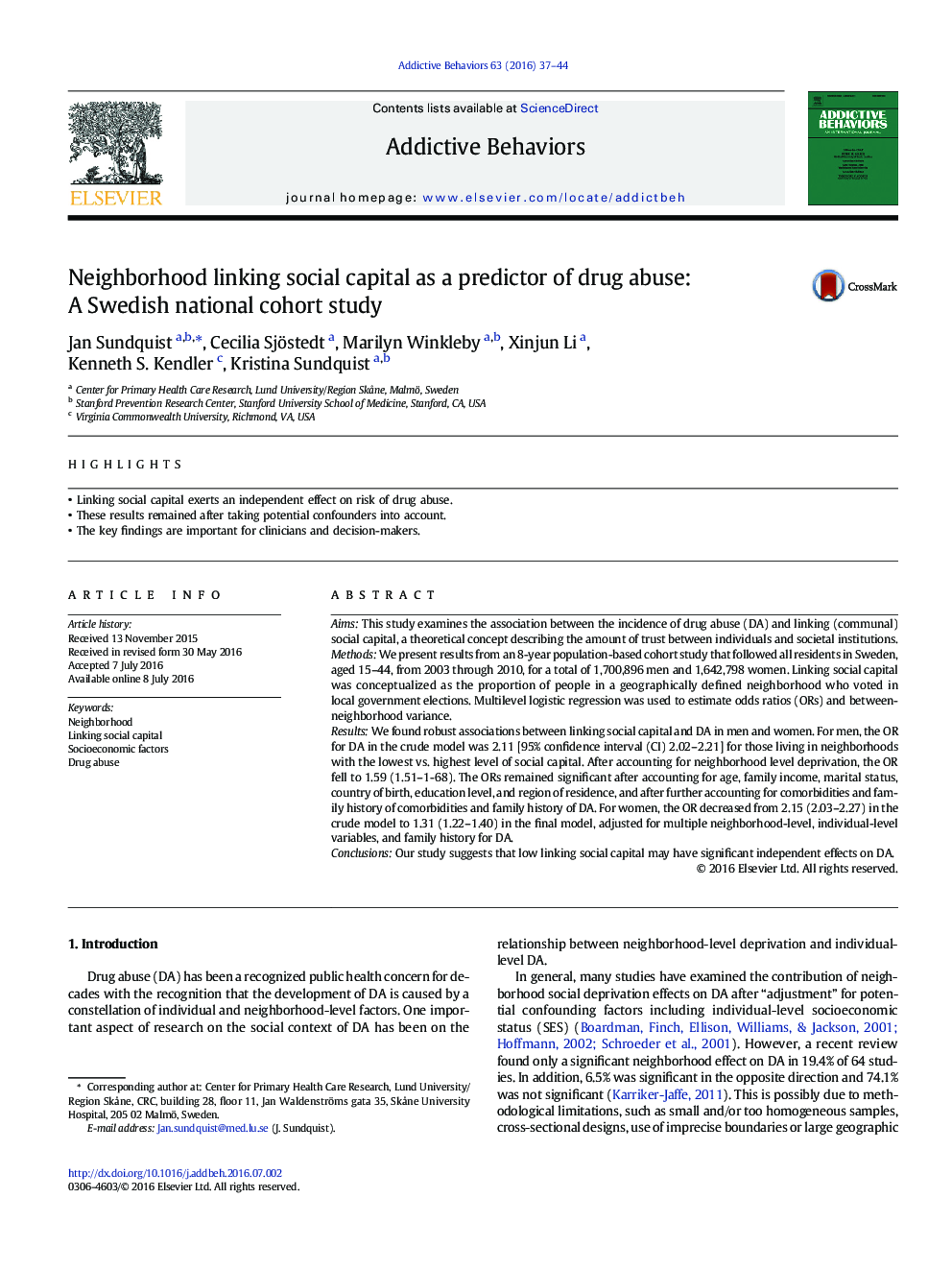| Article ID | Journal | Published Year | Pages | File Type |
|---|---|---|---|---|
| 898559 | Addictive Behaviors | 2016 | 8 Pages |
•Linking social capital exerts an independent effect on risk of drug abuse.•These results remained after taking potential confounders into account.•The key findings are important for clinicians and decision-makers.
AimsThis study examines the association between the incidence of drug abuse (DA) and linking (communal) social capital, a theoretical concept describing the amount of trust between individuals and societal institutions.MethodsWe present results from an 8-year population-based cohort study that followed all residents in Sweden, aged 15–44, from 2003 through 2010, for a total of 1,700,896 men and 1,642,798 women. Linking social capital was conceptualized as the proportion of people in a geographically defined neighborhood who voted in local government elections. Multilevel logistic regression was used to estimate odds ratios (ORs) and between-neighborhood variance.ResultsWe found robust associations between linking social capital and DA in men and women. For men, the OR for DA in the crude model was 2.11 [95% confidence interval (CI) 2.02–2.21] for those living in neighborhoods with the lowest vs. highest level of social capital. After accounting for neighborhood level deprivation, the OR fell to 1.59 (1.51–1-68). The ORs remained significant after accounting for age, family income, marital status, country of birth, education level, and region of residence, and after further accounting for comorbidities and family history of comorbidities and family history of DA. For women, the OR decreased from 2.15 (2.03–2.27) in the crude model to 1.31 (1.22–1.40) in the final model, adjusted for multiple neighborhood-level, individual-level variables, and family history for DA.ConclusionsOur study suggests that low linking social capital may have significant independent effects on DA.
